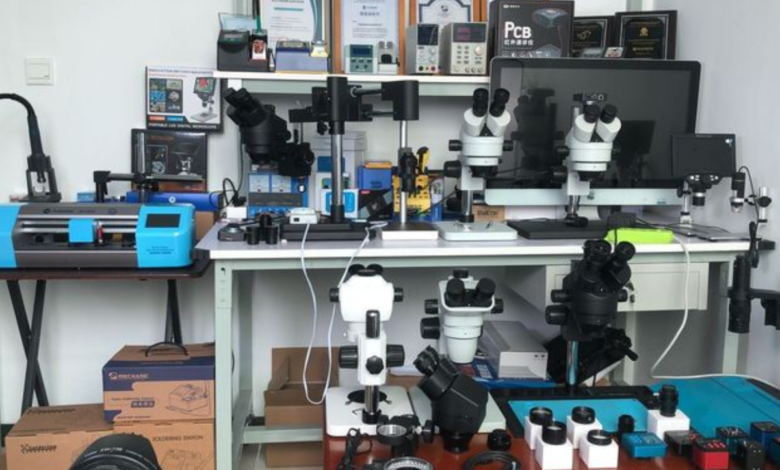Stereo Microscopes: A Comprehensive Guide to 3D Imaging in Science and Industry

Introduction
Stereo microscopes, also known as dissecting microscopes or stereoscopic microscopes, are specialized optical instruments designedhttps://www.katway.com/ for low-magnification observation of three-dimensional (3D) specimens. Unlike compound microscopes, which are optimized for high-magnification viewing of thin, translucent samples, stereo microscopes provide depth perception and a large working distance, making them ideal for examining solid, opaque objects .
These microscopes are widely used in fields such as biology, medicine, electronics, gemology, and manufacturing due to their ability to produce clear, 3D images while allowing users to manipulate samples in real time.
How Stereo Microscopes Work
Stereo microscopes operate using two separate optical paths, each consisting of an eyepiece and an objective lens. These paths are angled slightly differently (typically 10–16° apart), mimicking human binocular vision and creating a stereoscopic effect that enhances depth perception .
Key Components of a Stereo Microscope
- Eyepieces (Ocular Lenses) – Provide magnification (typically 10x or 20x) and allow for comfortable viewing.
- Objective Lenses – Available in fixed or zoom (pancratic) magnification systems, offering flexibility in magnification range.
- Illumination System – Includes reflected (top) and transmitted (bottom) lighting for observing opaque and translucent samples.
- Focus Knob – Adjusts the height of the microscope head to bring the specimen into focus.
- Stage Plate – Supports the sample and may include reversible black/white backgrounds for contrast enhancement .
Types of Stereo Microscopes
Stereo microscopes come in various designs, each suited for specific applications:
1. Greenough Design
- Uses two separate optical systems inclined at an angle.
- Cost-effective and widely used in education and industry.
- Provides high resolution but may have limited modularity .
2. Common Main Objective (CMO) Design
- Features a single large objective lens shared by both optical paths.
- Offers better image quality and flexibility for attachments (e.g., cameras).
- Preferred in research and high-end industrial applications .
3. Digital Stereo Microscopes
- Integrates cameras for live image display on monitors.
- Useful for documentation, teaching, and quality control .
4. Boom Stand Microscopes
- Provides extended reach and flexibility for large or heavy samples.
- Commonly used in electronics repair and microsurgery .
Applications of Stereo Microscopes
Stereo microscopes are indispensable in numerous fields:
1. Biology & Medicine
- Used for dissections, microsurgery, and studying live specimens.
- Essential in embryology and neuroscience research .
2. Electronics & Manufacturing
- Ideal for inspecting circuit boards, soldering, and quality control.
- Helps detect microfractures and assembly defects .
3. Gemology & Geology
- Examines gemstones, minerals, and fossils with precision.
- Darkfield illumination enhances surface detail visibility .
4. Forensic Science & Paleontology
- Analyzes evidence such as fibers, tool marks, and bone structures.
- Assists in fossil cleaning and documentation .
Advantages and Limitations of Stereo Microscopes
Advantages
- 3D Visualization – Provides depth perception for better sample analysis.
- Large Working Distance – Allows manipulation of specimens under the microscope.
- Versatile Illumination – Supports reflected, transmitted, and darkfield lighting.
- Ease of Use – Requires minimal sample preparation .
Limitations
- Lower Magnification – Typically maxes out at 100x, unlike compound microscopes.
- Resolution Constraints – Limited by the physics of light and optical design .
Conclusion
Stereo microscopes are powerful tools that bridge the gap between macro and micro observation. Their ability to provide 3D imaging, combined with a large working distance and versatile illumination options, makes them essential in scientific research, industrial inspection, and medical applications. Whether used in a laboratory, manufacturing plant, or educational setting, stereo microscopes continue to play a crucial role in advancing discovery and precision work .
For those seeking high-quality imaging with depth perception, a stereo microscope remains an invaluable asset in modern microscopy.
Would you like recommendations on selecting the best stereo microscope for your needs? Let us know in the comments!
